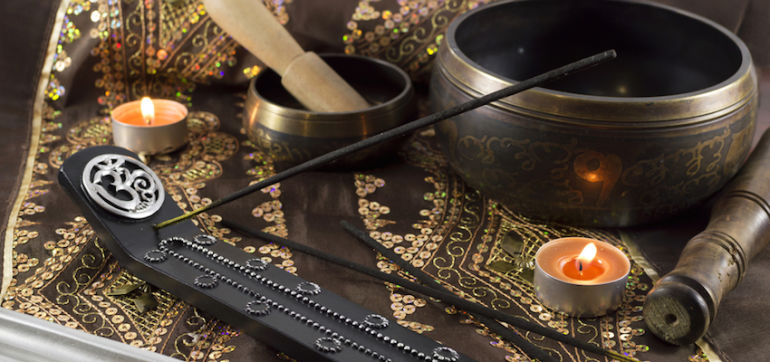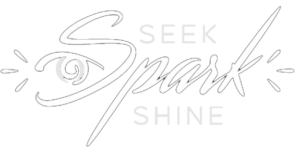*Originally published on MindBodyGreen*
Reiki Circles (also called Reiki Shares) have grown in popularity over the last several years. Reiki Circles began as a way for practitioners to practice on one another and the community, honing their skills and also gaining healing. They’ve expanded to incorporate distance healing, healing for causes and circles specifically to help those with chronic illnesses.
What is a Reiki Circle?
A Reiki Circle allows people physically or virtually to send healing energy to an individual, one another, a cause or place. A certified Reiki practitioner facilitates the group and Reiki Circles can last anywhere from one to several hours. Traditional Reiki Circles gather practitioners who take turns practicing Reiki as a group on one another or recipients from the community.
As this trend has grown, Reiki Circles are being used for many different purposes, and I currently help facilitate a weekly Reiki Circle that occurs at the same time every week for a friend of mine who has ALS. We have a Facebook group dedicated to his healing, and each week we post a reminder and ask participants to let us know who will be joining us. The treatment lasts for an hour and we invite people to participate for as much of the hour as they can.
You may choose to hold an entirely in-person circle, an entirely virtual circle or a combination of the two. The recipient typically lies in the center of the group, with the Reiki practitioner(s) providing hands-on treatment. Depending on how large the group is all or multiple participants also can trade off providing energy healing to the recipient.
Who can hold a Reiki Circle and who can participate?
A certified Reiki practitioner facilitates the circle and, depending on your format, participants may include both those who are Reiki certified as well as those who are not. In our ongoing Reiki Circle, we just ask that people send light energy toward our friend, saying prayers/blessings or visualizing him surrounded by healing light. This allows others who aren’t Reiki-certified to also lend their energy, which is channeled through the Reiki practitioner(s), who ground(s) and direct(s) it.
Why would you hold a Reiki Circle?
Reiki Circles can be held for many healing purposes, and can allow us to join our energies with people across the country and even the world. Collective consciousness is powerful, and when multiple people direct their energies toward one focus or goal, the results can be astounding.
My friend with ALS continually experiences feelings of peace, calm and happiness after his treatment, and sometimes has more energy than before. Additionally, it’s been a beautiful way for him to connect with all the friends and family he has across the world, who can’t physically be with him every week. And it allows those friends and family members to also feel the connection, creating healing for everyone.
Reiki Circles can be held to practice Reiki on one another, for someone who is seeking to heal an illness, or recovering from a traumatic incident or surgery. They can also be held to send healing energy to a group of individuals, a philanthropic cause or current social issue, in addition to geographical locations (i.e. areas of the world).
What are the basic steps for a Reiki Circle?
Reiki Circles can be highly individualized depending on the practitioner and participants. Below is a sample format, which includes instructions for virtual participants and can be adapted as needed.
- Choose a date, time and location. Plan for the space you’ll need for the practitioner and in-person participants. Invite your community to participate via email, text, phone call or social networks.
- Send a reminder and ask for RSVPs, taking note of the names of virtual participants. I like to call these names out as I’m connecting them to the circle.
- I also select a chant or song to play during the treatment, deepening the energetic connection to the group for those joining virtually. Buddhist and Vedic chants lend themselves well, and can be found on YouTube (include this link in your invitation).
- Before the circle begins, sage the room and all participants. Assemble in-person participants in a circle around the first or sole recipient.
- Let the participants know the format you’ve chosen for administering healing touch (this depends on the number of in-person participants and recipients). In general one person lies in the center, with four to five individuals also providing hands-on Reiki. If there are multiple recipients, after 15-20 minutes, the current recipient switches out with another. If there is just one recipient, participants can come up from the circle, one to four at a time. This can be fluid (as people wish to come up) or you can set a “round robin” order. Virtual participants can use the Reiki Distance symbol and hold a photo of the recipient or an object that represents him/her/it, to guide their healing energy.
- If you’ve selected music, begin playing it.
- Lead the group in a brief grounding and centering meditation, which can be as simple as asking everyone to connect to their breath and bodies.
- Follow your personal protocol for accessing Reiki energy.
- Verbally ask to connect to the distance participants, and call out their names if you have them, adding “and anyone else who is sending healing energy” and utilizing the distance symbol. Virtual participants only need to tune in energetically (i.e. phone or video conference aren’t needed, but could be incorporated).
- Provide the Reiki treatment, keeping an eye on the time.
- When finished, close out the Reiki Circle by thanking all the participants, releasing their energy and closing the circle. This is also a nice time to socialize, and perhaps share in food and refreshment.
Photo Credit: Shutterstock


 Seek Spark Shine is designed to provide you with the tools, information and skills you need to find your unique healing path, and follow it towards brilliance. With an emphasis on multiple healing modalities, I work with you to find the modalities that most resonate with you and your journey. My aim is to help you experience healing during our sessions and also learn how to replicate and create this for yourself in your life on an ongoing basis.
Seek Spark Shine is designed to provide you with the tools, information and skills you need to find your unique healing path, and follow it towards brilliance. With an emphasis on multiple healing modalities, I work with you to find the modalities that most resonate with you and your journey. My aim is to help you experience healing during our sessions and also learn how to replicate and create this for yourself in your life on an ongoing basis.
Leave A Comment